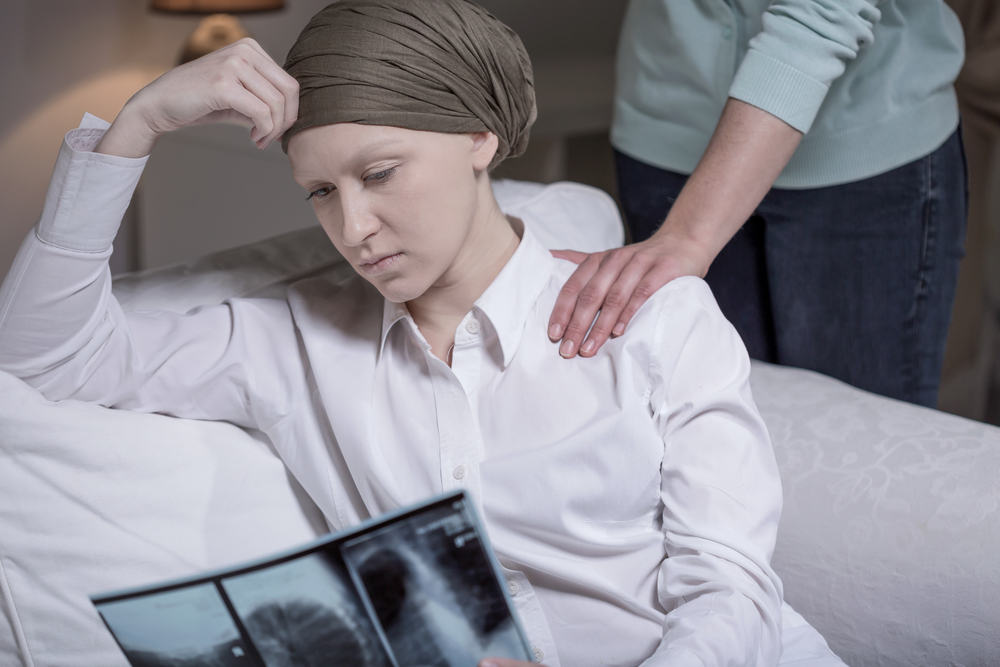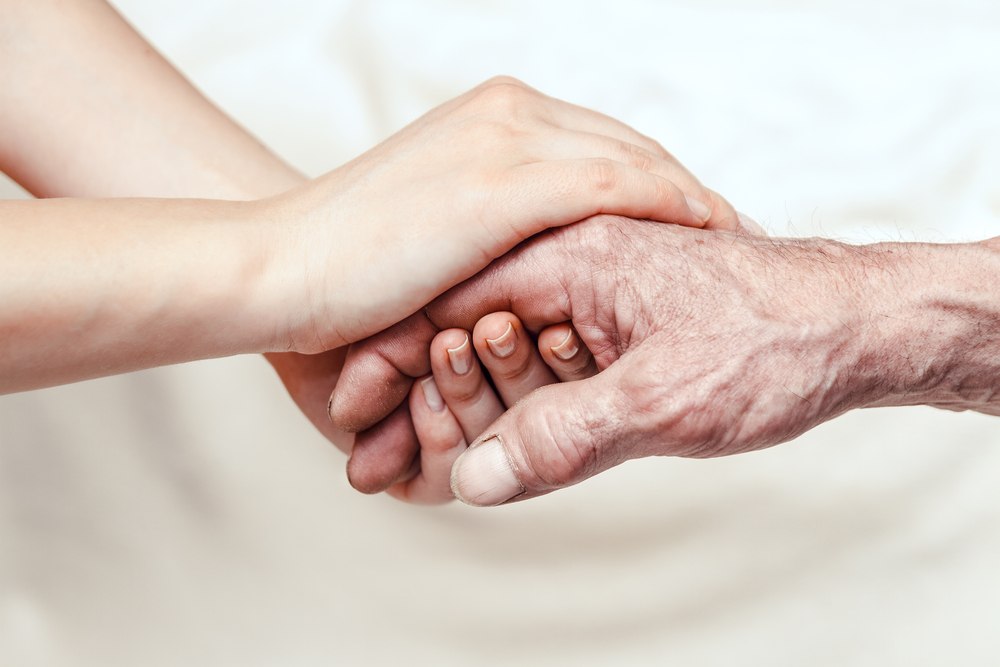Contents:
- Medical Video: CME: Secondary Cancers Occurring After Cancer Treatment: Prevention of Breast Cancer
- What is secondary cancer?
- What causes secondary cancer?
- 1. The spread of cancer cells through the lymphatic system
- 2. Having a history of cancer in childhood
- 3. Genetic mutations in the family
Secondary cancer risk can come from the gene mutation factors inherited from parents in their children which can increase the risk of getting one or several types of cancer. For example, mutations in certain genes such as BRCA1 and BRCA2 increase the risk of several types of cancers such as breast and ovarian cancer. Or other genetic diseases such as Lynch syndrome and Hodgkin's disease can increase the risk of colorectal cancer, endometrium, bladder cancer, bone cancer and stomach cancer.
4. Cancer treatment factorsAlthough it has a small chance, the risk of secondary cancer can be triggered by several methods of cancer treatment, including:
- Chemotherapy - basically almost every chemotherapy drug has a potential carcinogenic nature that can damage healthy cells so that it can increase the risk of new cancers after treatment is completed or in the future.
- Radiation therapy - is a treatment method that has a higher risk of causing secondary cancer than chemotherapy because the effects of damage caused to healthy cells tend to be greater.
- Stem cell transplantation - can trigger the risk of secondary cancer because it requires chemotherapy doses which are also sometimes accompanied by radiation in high doses. To reduce the risk of transplantation, this treatment method also uses drugs that play a role in reducing body resistance and the risk of causing disorders caused by lymph cell malfunction and T cells, Epstein-Barr virus infection and incompatibility of stem cell donor cells with recipients.
Maintaining health after cancer treatment is something that must be done by maintaining a healthy diet, regular exercise, avoiding excessive exposure to UV light and avoiding exposure to cigarette smoke and alcohol. Although there are other factors such as hormonal conditions and immunity, implementing a healthy lifestyle is very important to prevent secondary cancer.
Secondary cancer has the same risk factors as primary cancer
Medical Video: CME: Secondary Cancers Occurring After Cancer Treatment: Prevention of Breast Cancer
As a chronic disease, cancer has a major impact on decreasing the quality of one's health and life as a whole. Especially if the cancer gets worse or the cancer has disappeared and then relapse (reccurent) But not only that, another serious impact is the emergence of new cancers that are not related to previous cancers. This complication is known as secondary cancer.
What is secondary cancer?
Primary cancer is where cancer begins. Sometimes cancer cells can escape from primary cancer and remain and grow in other parts of the body. This new cancerous growth is called secondary cancer. This new cancer is not metastasis, but rather refers to "second" cancer that is not related to the first.
Secondary cancer can appear in organs that have previously been exposed to cancer or other organs due to the spread of cancer cells. This can happen for a long time or in an annual count even monthly after cancer patients are declared cured. The emergence of secondary cancer can be due to several types of cancer that have a risk of developing a higher secondary cancer. However, there is a chance of secondary cancer regardless of the type of primary cancer someone has ever experienced.
What causes secondary cancer?
It is not known exactly how secondary cancer can appear when cancer patients have been declared cured because there are various risk factors that can trigger it.
Here are some factors that influence the emergence of secondary cancer in cancer patients:
1. The spread of cancer cells through the lymphatic system
This begins when the cell from the primary cancer is damaged and then separates and successfully enters the bloodstream to the lymphatic system. The lymphatic system itself is part of the immune system that has channels to various organs of the body. Decreased immunity and genetic factors play a role in the process of displacement because the lymphatic system cannot capture cancer cells until new cancer cells appear.
There are several types of secondary cancers that tend to appear due to the spread of cancer cells through the circulation of the lymphatic system, including:
- Secondary brain cancer - comes from lung cancer, breast cancer, kidney cancer, skin cancer and colorectal cancer.
- Secondary lung cancer - can come from breast cancer, colon cancer, kidney cancer, testicular cancer, bladder cancer, melanoma skin cancer, bone cancer and sacroma in soft tissue.
- Secondary liver cancer - primary cancer originating in the breast, intestine and lungs.
- Secondary bone cancer - can appear on all types of bones in the body that come from breast cancer, prostate cancer, kidney cancer and cancer of the thyroid gland.
2. Having a history of cancer in childhood
Cancer in childhood or that occurs at the age of under 15 years is largely influenced by gene mutations or treatment effects during the body's developmental period. As a result there is a higher risk for common types of cancer such as prostate cancer, colorectal cancer and breast cancer. To anticipate this, it is very important for parents to always pay attention to records of disease history and health conditions of children and to conduct early detection and treatment as soon as possible in the future.
3. Genetic mutations in the family
Secondary cancer risk can come from the gene mutation factors inherited from parents in their children which can increase the risk of getting one or several types of cancer. For example, mutations in certain genes such as BRCA1 and BRCA2 increase the risk of several types of cancers such as breast and ovarian cancer. Or other genetic diseases such as Lynch syndrome and Hodgkin's disease can increase the risk of colorectal cancer, endometrium, bladder cancer, bone cancer and stomach cancer.
4. Cancer treatment factors
Although it has a small chance, the risk of secondary cancer can be triggered by several methods of cancer treatment, including:
- Chemotherapy - basically almost every chemotherapy drug has a potential carcinogenic nature that can damage healthy cells so that it can increase the risk of new cancers after treatment is completed or in the future.
- Radiation therapy - is a treatment method that has a higher risk of causing secondary cancer than chemotherapy because the effects of damage caused to healthy cells tend to be greater.
- Stem cell transplantation - can trigger the risk of secondary cancer because it requires chemotherapy doses which are also sometimes accompanied by radiation in high doses. To reduce the risk of transplantation, this treatment method also uses drugs that play a role in reducing body resistance and the risk of causing disorders caused by lymph cell malfunction and T cells, Epstein-Barr virus infection and incompatibility of stem cell donor cells with recipients.
5. Lifestyle factors after treatment
Maintaining health after cancer treatment is something that must be done by maintaining a healthy diet, regular exercise, avoiding excessive exposure to UV light and avoiding exposure to cigarette smoke and alcohol. Although there are other factors such as hormonal conditions and immunity, implementing a healthy lifestyle is very important to prevent secondary cancer.
Secondary cancer has the same risk factors as primary cancer
Some types of cancer such as colorectal cancer and breast cancer do not have specific risk factors, but are different from cancer which can be caused by specific risk factors such as smoking and alcohol consumption. For example, the incidence of laryngeal cancer in a person can be caused by smoking risk factors so that someone does not close it will also experience other cancers related to smoking behavior including cancer in the mouth, throat, esophagus and lung cancer. Even organs that are located far from primary cancer, such as bladder cancer.












